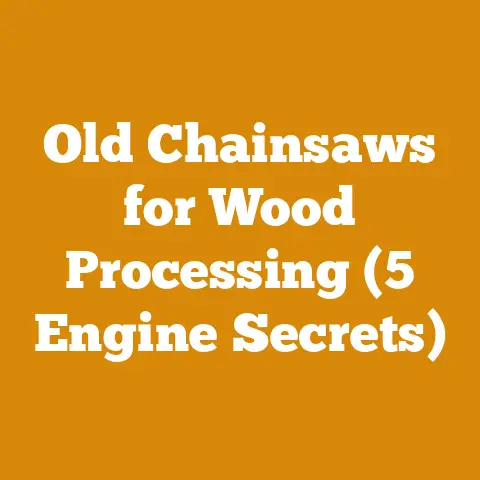How to Enclose a Porch with Windows (Quick DIY Woodwork Tips)
From Porch to Paradise: A DIY Enclosure and the Woodworking Costs You Need to Know
There’s something deeply satisfying about working with wood.
The smell of freshly cut lumber, the feel of the grain under your hand – it’s a connection to nature and a tangible accomplishment all rolled into one.
One of my favorite projects to date was transforming my old, screen-in porch into a usable three-season room.
I’d always wanted a space where I could enjoy the outdoors without battling bugs or unpredictable weather.
Enclosing that porch with windows became a mission, a journey into the heart of DIY woodwork, and a masterclass in budgeting!
But before I started swinging a hammer, I knew I had to get a handle on the costs.
Woodworking, even on a relatively small scale like enclosing a porch, can quickly become an expensive endeavor if you don’t plan carefully.
So, let’s dive into the nitty-gritty of pricing, materials, labor (if you’re not going it alone!), and all the little expenses that can sneak up on you.
Understanding the Scope: Variables Affecting Your Porch Enclosure Costs
First, let’s get real: “cheap” and “enclosing a porch with windows” rarely go hand-in-hand.
The final cost is a moving target, influenced by a bunch of factors.
I wish I had a magic formula to predict exactly how much your project will cost but I don’t.
It truly depends on your specific circumstances.
Here’s what I’ve learned from my own experience and countless hours of research:
- Porch Size: This is the big one.
A small, 8×10 porch will obviously cost less to enclose than a sprawling 20×30 deck. - Window Type: Are you going for single-pane, double-pane, triple-pane, vinyl, wood-framed, or custom windows?
Each choice has a significant impact. - Framing Material: The type of wood you choose for framing makes a huge difference.
Pressure-treated lumber, cedar, redwood, or even composite materials all have different price points. - Siding and Trim: Matching your existing house siding can be expensive, or you can opt for a more budget-friendly alternative.
Trim details also add to the overall cost. - DIY vs.
Professional Installation: Doing it yourself saves on labor costs, but you’ll need the skills, tools, and time.
Hiring a contractor is faster, but it comes at a premium. - Permits: Depending on your location, you might need building permits, which add to the overall expense.
- Location, Location, Location: Material costs vary widely depending on where you live.
Lumber prices in rural areas can be lower than in bustling cities. - Seasonality: Believe it or not, the time of year can affect lumber prices.
Demand tends to increase in the spring and summer, leading to higher prices.
Breaking Down the Costs: A Deep Dive into Porch Enclosure Expenses
Okay, let’s get into the details.
Here’s a breakdown of the cost components you’ll need to consider when planning your porch enclosure project.
I’ll also share some data points and industry benchmarks to give you a realistic idea of what to expect.
1. Lumber and Framing Materials
This is where a significant chunk of your budget will go.
The type and quantity of lumber you need will depend on the size of your porch and the complexity of the framing.
- Pressure-Treated Lumber: This is the most common choice for framing because it’s resistant to rot and insect damage.
Expect to pay anywhere from $3 to $7 per linear foot for standard sizes like 2x4s and 2x6s.
I’ve found that prices fluctuate based on the grade and treatment level. - Cedar or Redwood: These naturally rot-resistant woods are beautiful and durable, but they come at a premium.
Expect to pay $8 to $15 per linear foot or even more for higher grades.
The price is usually double or triple that of pressure-treated lumber. - Composite Lumber: A more expensive but low-maintenance option that resists rot, insects, and warping.
Prices range from $5 to $12 per linear foot. - Sheathing: Plywood or OSB (oriented strand board) is used to cover the framing.
A 4×8 sheet of plywood can range from $25 to $60, depending on the thickness and grade.
OSB is typically cheaper, ranging from $15 to $40 per sheet.
Data Point: According to the National Association of Home Builders (NAHB), lumber prices have been volatile in recent years due to supply chain disruptions and increased demand.
In 2021, lumber prices soared to record highs, impacting the cost of all construction projects.
While prices have since stabilized somewhat, it’s still important to shop around and compare quotes from different suppliers.
My Experience: I opted for pressure-treated lumber for the framing of my porch enclosure because it offered the best balance of cost and durability.
However, I used cedar for the trim and railings to add a touch of natural beauty.
2. Windows: The View Comes at a Price
Windows are arguably the most important element of your porch enclosure, and they also represent a significant cost.
- Single-Pane Windows: These are the most affordable option, but they offer poor insulation and are not ideal for year-round use.
Expect to pay $50 to $150 per window, depending on size and style. - Double-Pane Windows: These offer better insulation and are a good choice for three-season rooms.
Prices range from $150 to $400 per window. - Triple-Pane Windows: These provide the best insulation and noise reduction, but they are also the most expensive.
Expect to pay $300 to $800 per window. - Vinyl Windows: A popular choice because they are low-maintenance and energy-efficient.
Prices range from $100 to $500 per window. - Wood-Framed Windows: These offer a classic look and can be painted or stained to match your home’s exterior.
However, they require more maintenance than vinyl windows.
Prices range from $200 to $800 per window. - Custom Windows: If you have unusual-sized openings or want a specific style, you’ll need to order custom windows.
These can be significantly more expensive than standard sizes, ranging from $500 to $2000 or more per window.
Data Point: Energy Star-certified windows can save you money on your energy bills in the long run.
According to the U.S.
Department of Energy, Energy Star windows can reduce energy costs by 12% in the winter and 15% in the summer.
My Experience: I went with double-pane vinyl windows for my porch enclosure.
They provided good insulation without breaking the bank, and they were easy to install myself.
I also opted for a few awning windows to provide ventilation even when it’s raining.
3. Siding and Trim: Finishing Touches That Add Up
The siding and trim you choose will affect the overall look and feel of your porch enclosure, as well as its cost.
- Matching Existing Siding: If you want your porch enclosure to blend seamlessly with your home, you’ll need to match your existing siding.
This can be expensive, especially if you have a less common siding material.
Expect to pay $3 to $10 per square foot for siding materials. - Vinyl Siding: A budget-friendly option that comes in a variety of colors and styles.
Prices range from $2 to $5 per square foot. - Wood Siding: A classic choice that can be painted or stained to match your home’s exterior.
Prices range from $3 to $8 per square foot. - Trim: Trim is used to cover the joints between the siding and the windows, doors, and roof.
Prices range from $1 to $5 per linear foot, depending on the material and style.
Data Point: According to Remodeling Magazine’s 2023 Cost vs.
Value Report, the national average cost to replace vinyl siding is around $16,000, while the national average cost to replace wood siding is around $20,000.
My Experience: I chose to use a different siding material for my porch enclosure than what was on the rest of my house.
I went with a pre-primed wood siding that I painted to match the trim.
This saved me money and added a unique look to the space.
4. Roofing: Keeping the Elements Out
If your porch doesn’t already have a roof, you’ll need to add one as part of the enclosure project.
- Asphalt Shingles: The most common and affordable roofing material.
Prices range from $1.50 to $4 per square foot. - Metal Roofing: A durable and long-lasting option that can add a modern look to your home.
Prices range from $5 to $15 per square foot. - Wood Shingles or Shakes: A rustic and beautiful option that requires more maintenance than other roofing materials.
Prices range from $8 to $20 per square foot.
Data Point: The lifespan of a roof depends on the material and the climate.
Asphalt shingles typically last 15-30 years, while metal roofs can last 50 years or more.
My Experience: My porch already had a roof, so I didn’t need to factor in roofing costs.
However, I did need to repair a few damaged shingles and add some flashing to ensure that the enclosure was watertight.
5. Doors: Entry and Exit Points
You’ll need at least one door to access your enclosed porch.
- Sliding Glass Doors: A popular choice for porch enclosures because they offer a wide opening and plenty of natural light.
Prices range from $500 to $2000 per door. - French Doors: A classic and elegant option that can add a touch of sophistication to your porch enclosure.
Prices range from $800 to $3000 per door. - Exterior Doors: A standard exterior door can also be used for a porch enclosure.
Prices range from $200 to $1000 per door.
Data Point: The cost of a door installation can vary depending on the complexity of the project.
A simple door replacement can cost as little as $200, while a more complex installation that requires framing modifications can cost $1000 or more.
My Experience: I installed a sliding glass door on my porch enclosure to provide easy access to the backyard.
I found a good deal on a slightly used door at a local salvage yard, which saved me a significant amount of money.
6. Electrical Work: Powering Your Paradise
If you want to add lighting, outlets, or ceiling fans to your enclosed porch, you’ll need to hire an electrician.
- Outlets: Expect to pay $50 to $150 per outlet for professional installation.
- Lighting: The cost of lighting installation can vary depending on the type of fixture and the complexity of the wiring.
Expect to pay $100 to $500 per fixture. - Ceiling Fans: Expect to pay $150 to $500 per ceiling fan for professional installation.
Data Point: According to HomeAdvisor, the national average cost for electrical work is around $300.
My Experience: I hired an electrician to run a new circuit to my porch enclosure and install a few outlets and a ceiling fan.
I paid around $500 for the electrical work, which was well worth it for the added convenience.
7. Permits: The Necessary Evil
Depending on your location, you might need building permits to enclose your porch.
Permit fees can vary widely, ranging from a few hundred dollars to several thousand dollars.
Data Point: Permit fees are typically based on the value of the project.
Contact your local building department to determine the permit requirements and fees for your area.
My Experience: I had to obtain a building permit to enclose my porch.
The permit fee was around $300, which was a small price to pay for peace of mind.
8. Tools and Equipment: Gear Up for Success
If you’re doing the work yourself, you’ll need to have the right tools and equipment.
Here’s a list of essential tools for a porch enclosure project:
- Chainsaw: For cutting lumber (if you’re milling your own or modifying purchased lumber).
A good quality chainsaw can range from $200 to $1000 or more. - Circular Saw: For cutting plywood and other sheet materials.
Prices range from $50 to $200. - Miter Saw: For making accurate angle cuts. Prices range from $100 to $500.
- Drill/Driver: For screwing together the framing. Prices range from $50 to $200.
- Level: For ensuring that the framing is plumb and level.
Prices range from $20 to $50. - Measuring Tape: For accurate measurements. Prices range from $10 to $30.
- Hammer: For driving nails. Prices range from $10 to $30.
- Safety Glasses: For protecting your eyes. Prices range from $5 to $20.
- Work Gloves: For protecting your hands. Prices range from $5 to $20.
Data Point: Consider renting some of the more expensive tools, such as a chainsaw or miter saw, if you don’t plan on using them frequently.
Tool rental fees typically range from $20 to $50 per day.
My Experience: I already had most of the tools I needed for the project, but I did have to buy a new miter saw to make accurate angle cuts.
I also rented a chainsaw to cut some of the larger lumber pieces.
9. Labor Costs: The DIY Dilemma
If you’re hiring a contractor to enclose your porch, labor costs will be a significant expense.
Labor costs can vary widely depending on the contractor, the location, and the complexity of the project.
- General Contractor: Expect to pay $50 to $150 per hour for a general contractor.
- Carpenters: Expect to pay $30 to $80 per hour for carpenters.
- Electricians: Expect to pay $50 to $100 per hour for electricians.
Data Point: According to HomeAdvisor, the national average cost for labor on a home improvement project is around 30% of the total project cost.
My Experience: I did most of the work myself to save money on labor costs.
However, I did hire an electrician to run the electrical wiring.
10. Unexpected Costs: The Murphy’s Law Factor
No matter how carefully you plan, there are always unexpected costs that can pop up during a home improvement project.
It’s a fact of life.
- Rotten Wood: You might discover rotten wood in the existing porch framing that needs to be replaced.
- Hidden Wiring: You might encounter hidden wiring or plumbing that needs to be rerouted.
- Weather Delays: Inclement weather can delay the project and increase labor costs.
- Material Price Increases: Lumber prices can fluctuate, so you might end up paying more for materials than you originally budgeted.
My Experience: I discovered some rotten wood in the existing porch framing that needed to be replaced.
This added about $100 to the overall cost of the project.
Putting It All Together: Estimating Your Total Cost
Okay, so now that we’ve broken down all the cost components, let’s try to estimate the total cost of your porch enclosure project.
Keep in mind that these are just estimates, and your actual costs may vary.
Small Porch (8×10):
- Lumber and Framing Materials: $500 – $1500
- Windows: $500 – $2000
- Siding and Trim: $300 – $1000
- Roofing: $0 – $500 (if needed)
- Doors: $200 – $1000
- Electrical Work: $0 – $500
- Permits: $0 – $300
- Tools and Equipment: $100 – $500 (if needed)
- Labor Costs: $0 – $2000 (if hiring a contractor)
- Unexpected Costs: $100 – $500
Total Estimated Cost: $1700 – $8800
Large Porch (20×30):
- Lumber and Framing Materials: $2000 – $6000
- Windows: $2000 – $8000
- Siding and Trim: $1000 – $4000
- Roofing: $0 – $2000 (if needed)
- Doors: $500 – $3000
- Electrical Work: $0 – $1500
- Permits: $0 – $1000
- Tools and Equipment: $200 – $1000 (if needed)
- Labor Costs: $0 – $10000 (if hiring a contractor)
- Unexpected Costs: $500 – $2000
Total Estimated Cost: $6200 – $38500
As you can see, the cost of enclosing a porch can vary widely depending on the size of the porch, the materials you choose, and whether you hire a contractor.
Cost Optimization Strategies: Saving Money Without Cutting Corners
Now, let’s talk about how to save money on your porch enclosure project without sacrificing quality or safety.
- Shop Around for Materials: Get quotes from multiple suppliers and compare prices.
Don’t be afraid to negotiate. - Consider Salvaged Materials: Check out local salvage yards for used windows, doors, and lumber.
You can often find high-quality materials at a fraction of the cost of new ones. - Do Some of the Work Yourself: Even if you’re not comfortable doing all the work yourself, you can save money by doing some of the simpler tasks, such as demolition, painting, or landscaping.
- Buy in Bulk: If you’re buying a lot of lumber or other materials, ask for a bulk discount.
- Plan Ahead: The more time you spend planning your project, the less likely you are to make costly mistakes.
- Get Multiple Quotes: If you’re hiring a contractor, get quotes from at least three different contractors before making a decision.
- Consider Off-Season Construction: Construction work tends to be less expensive during the off-season (typically winter) because contractors are less busy.
- Be Flexible: Be willing to make compromises on your design or materials to save money.
- Look for Sales and Discounts: Many home improvement stores offer sales and discounts on materials throughout the year.
- Utilize Online Resources: There are many online resources that can help you plan your project and find the best prices on materials.
Case Study: My Porch Enclosure Budget Breakdown
To give you a more concrete example, here’s a breakdown of the costs for my own porch enclosure project:
- Lumber and Framing Materials: $800
- Windows: $600 (salvaged)
- Siding and Trim: $400
- Roofing: $0 (existing roof)
- Doors: $300 (salvaged sliding glass door)
- Electrical Work: $500
- Permits: $300
- Tools and Equipment: $100 (miter saw rental)
- Labor Costs: $500 (electrician)
- Unexpected Costs: $100 (rotten wood)
Total Cost: $3600
My porch was about 12×16, so somewhere in the middle of the examples I gave above.
I was able to keep the costs down by doing most of the work myself, using salvaged materials, and shopping around for the best prices.
Calculating Wood Volume: Board Feet and Cords
Since this is a woodworking-focused article, let’s touch on calculating wood volume, which is essential for estimating lumber costs.
Board Foot: A board foot is a unit of measurement for lumber that is 1 inch thick, 12 inches wide, and 12 inches long.
To calculate the number of board feet in a piece of lumber, use the following formula:(Thickness (inches) x Width (inches) x Length (inches)) / 144
For example, a 2×4 that is 8 feet long contains (2 x 4 x 96) / 144 = 5.33 board feet.
* Cord: A cord is a unit of measurement for firewood that is 4 feet high, 4 feet wide, and 8 feet long.
A cord contains 128 cubic feet of wood.
While you won’t be buying lumber in cords for a porch enclosure, understanding the unit is helpful if you’re sourcing reclaimed wood or dealing with loggers.
Drying Time: Patience is a Virtue
If you’re using green lumber for your project, you’ll need to allow it to dry before using it.
Green lumber is lumber that has not been dried and has a high moisture content.
Using green lumber can lead to warping, cracking, and other problems.
The drying time for lumber depends on several factors, including the species of wood, the thickness of the lumber, and the climate.
In general, lumber will take about one year to air-dry per inch of thickness.
Actionable Takeaways: Enclose Your Dreams
Enclosing a porch with windows is a rewarding project that can add value and enjoyment to your home.
By understanding the costs involved and planning carefully, you can create a beautiful and functional space that you’ll enjoy for years to come.
Here are some actionable takeaways to help you get started:
- Assess Your Porch: Measure your porch and determine the size and scope of the project.
- Set a Budget: Determine how much you’re willing to spend on the project.
- Research Materials: Research the different types of materials available and choose the ones that best fit your budget and needs.
- Get Quotes: Get quotes from multiple suppliers and contractors.
- Create a Plan: Create a detailed plan for the project, including a timeline and a list of materials.
- Gather Your Tools: Gather the tools and equipment you’ll need for the project.
- Start Building: Start building your porch enclosure, following your plan carefully.
- Enjoy Your New Space: Once the project is complete, enjoy your new enclosed porch!
Final Thoughts: From Dream to Reality, One Board at a Time
Enclosing a porch with windows is a significant undertaking, but it’s one that’s well worth the effort.
By taking the time to plan carefully and budget wisely, you can create a beautiful and functional space that will enhance your home and your lifestyle.
And remember, the satisfaction of building something with your own hands is priceless!
So, grab your tools, gather your materials, and get ready to transform your porch into a paradise.
The scent of sawdust, the satisfaction of a job well done, and the joy of enjoying your new space await!
Now, go make some sawdust.






